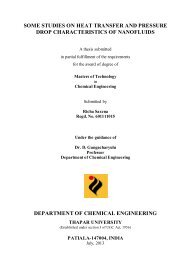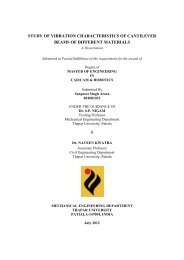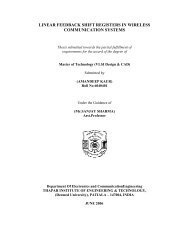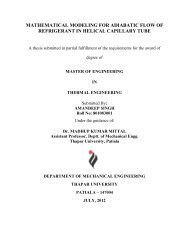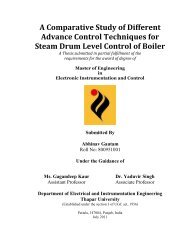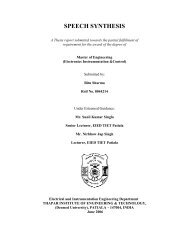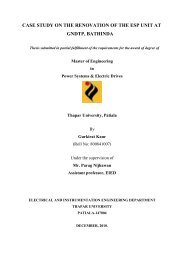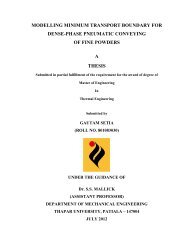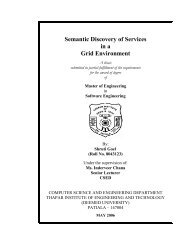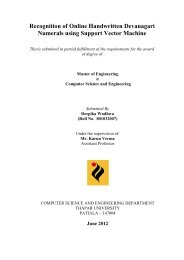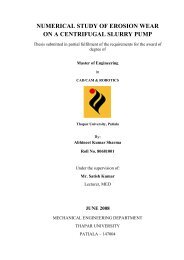from indigenous fermented foods and human gut ... - Thapar University
from indigenous fermented foods and human gut ... - Thapar University
from indigenous fermented foods and human gut ... - Thapar University
You also want an ePaper? Increase the reach of your titles
YUMPU automatically turns print PDFs into web optimized ePapers that Google loves.
Chapter II Review of Literature<br />
choice of new microbial strains to be used as probiotics should be their safety <strong>and</strong> origin.<br />
GRAS (generally recognised as safe) microorganisms include Lactobacillus spp. <strong>and</strong><br />
Bifidobacterium spp., which are bacteria with a long history of safe use, as they have been<br />
consumed by <strong>human</strong>s for centuries.<br />
Selection of other microorganisms must include expensive <strong>and</strong> time consuming short-<br />
<strong>and</strong> long-term toxicological studies (Morelli, 2000; Chesson et al., 2002). Havenaar et al.<br />
(1992) considered that the origin of the strain regarding host species <strong>and</strong> location specificity<br />
play an important role if colonization is essential for achieving the desired effect of the<br />
probiotic. In this study, strains <strong>from</strong> <strong>human</strong> origin <strong>and</strong> <strong>from</strong> traditional <strong>fermented</strong> food were<br />
compared in their in vitro probiotic potential. The bacterial isolates screened to be selected as<br />
potential probiotics in this study were isolated <strong>from</strong> Indian traditionally <strong>fermented</strong> food<br />
products <strong>and</strong> <strong>human</strong> meconium.<br />
2.4 Antimicrobial properties<br />
As indicated previously, the intestinal microflora is a complex ecosystem. Introducing<br />
new organisms into this highly competitive environment is difficult. Thus organisms which<br />
can produce such products which inhibit the growth or kill existing organisms in the intestinal<br />
milieu have a distinct advantage. The growth media filtrates <strong>and</strong> sonicates <strong>from</strong> the bacterial<br />
cells of prospective probiotics should be tested for bactericidal <strong>and</strong> bacteriostatic activity in<br />
well-plates against a wide variety of pathogens. The ability of probiotics to establish in the<br />
gastrointestinal tract will be enhanced by their ability to eliminate competitors.<br />
Antimicrobial activity is one of the most important selection criteria for probiotics.<br />
Antimicrobial activity targets the enteric undesirables <strong>and</strong> pathogens (Klaenhammer Kullen<br />
1999). Antimicrobial effects of lactic acid bacteria are formed by producing some substances<br />
such as organic acids (lactic, acetic, propionic acids), carbon dioxide, hydrogen peroxide,<br />
38



